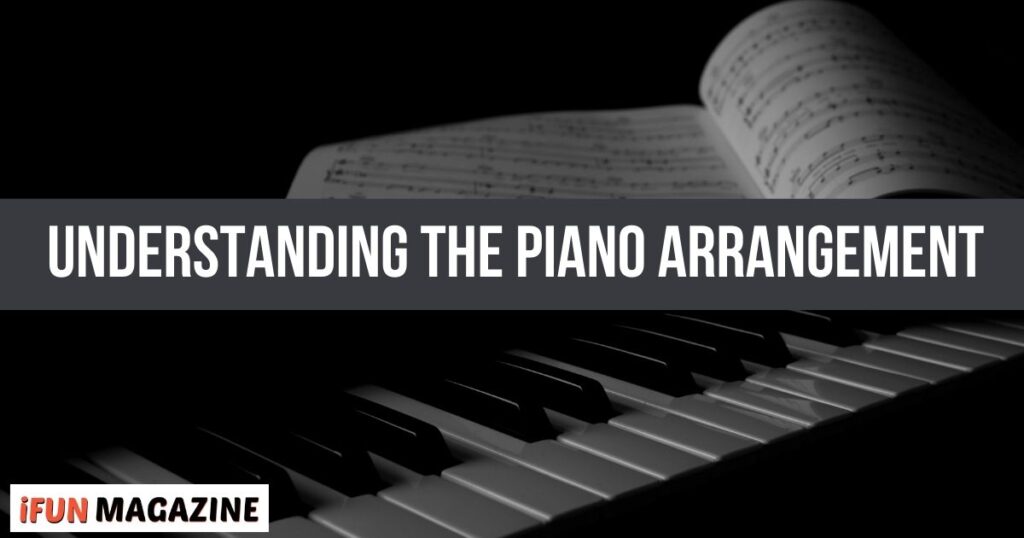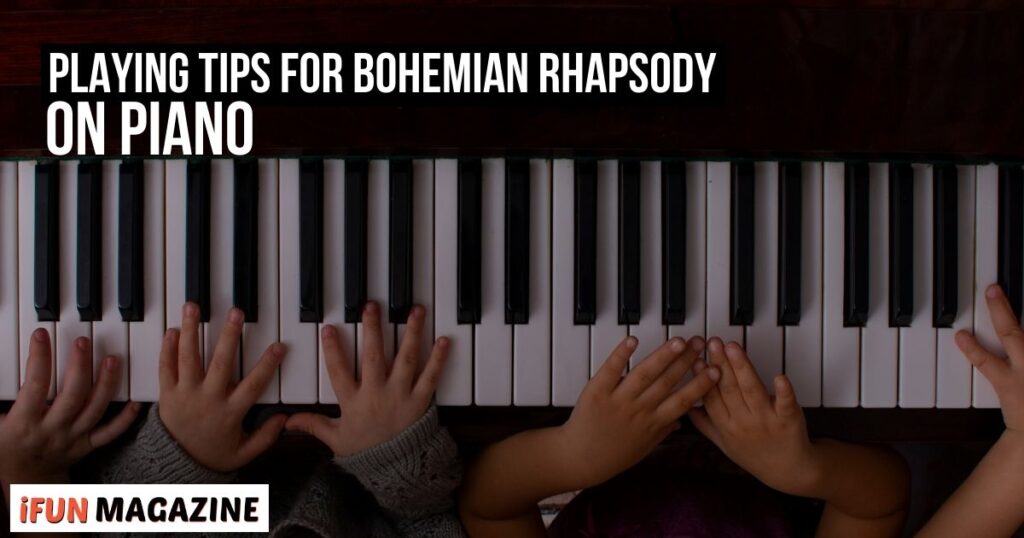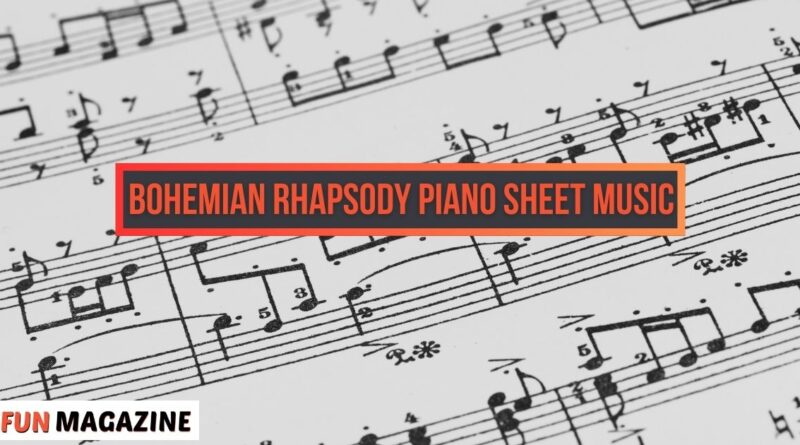“Bohemian Rhapsody Piano Sheet Music” is a legendary Queen masterpiece written by Freddie Mercury. It is loved for its dramatic and unique composition. Learning to play it on the piano allows you to experience its iconic melodies firsthand.
The piano sheet music for “Bohemian Rhapsody” captures every intricate detail, making it ideal for enthusiasts. Whether you’re a beginner or an advanced player, the sheet music is accessible for all skill levels. An engaging mix of ballad, operatic, and rock styles offers pianists a challenge and thrill.
The arrangement reflects the song’s complexities while remaining structured for ease of learning. Its popularity as a piano performance piece is unmatched and appreciated in concerts, gigs, and private practice. Unlocking the magic of this timeless song on your piano will immerse you in musical art.
Simple instructions paired with detailed sheet music simplify your piano learning experience. Explore the joy of mastering this brilliant piece today!
History and Significance of Bohemian Rhapsody
Background on the Song
“Bohemian Rhapsody” was written by Freddie Mercury for Queen’s 1975 album A Night at the Opera. This masterpiece blends emotion and creativity, standing out as one of music’s most significant works. Its unique genre-defying style makes it a standout track with enduring appeal.
Genre-Blending Composition
The song combines rock, ballad, and opera sections, creating a storyline through music. Fans love its dramatic shifts and intricate storytelling from start to finish. It inspired generations of musicians and influenced modern musical composition.
Cultural and Musical Significance
“Bohemian Rhapsody” became one of history’s most celebrated and successful songs. It broke barriers in music, and its impact continues decades after its release. The song also gained a second life following its revival in pop culture, including movies.
Understanding the Piano Arrangement

Breakdown of Key Sections
The piano arrangement follows the song’s structure, starting with a ballad, leading to opera, and finishing with hard rock. Each section showcases a different mood and style, making it exciting to learn and play.
Notable Challenges
Playing “Bohemian Rhapsody” on piano involves tackling key changes, tempo shifts, and vocal-like melodies. While full versions can be challenging to master, simplified arrangements make the song more accessible.
Simplified vs. Full Piano Sheet Music
Simpler sheet music versions offer easier learning and are perfect for beginners. Advanced players can enjoy the challenge of full arrangements, staying true to Queen’s original sound.
Finding Bohemian Rhapsody Piano Sheet Music
Official Sources
You can find licensed sheet music on websites like Musicnotes, Sheet Music Plus, and Hal Leonard. They provide high-quality and accurate copies for your piano practice.
Free Sheet Music Options
Look for legal platforms offering free downloads or public domain arrangements. Always check the website’s legitimacy before using the content.
Tips for Choosing the Right Sheet Music
Pick an arrangement that fits your skill level to avoid frustration while learning. Beginners should start with simplified versions, while advanced pianists can enjoy more complex arrangements.
Mastering “Bohemian Rhapsody” on piano combines fun, challenge, and a sense of musical achievement!
Playing Tips for Bohemian Rhapsody on Piano

For Beginners: Simplified Sheet Music Recommendations
Start with simplified sheet music to make learning easier and stress-free. Choose arrangements with fewer notes to focus on key melodies first. Learning slowly and steadily is better than rushing to play perfectly. Practice hand coordination by playing with each hand separately before combining them. Focus on essential dynamics, like playing softer or louder, to enhance expression.
For Intermediate and Advanced Players
Work on mastering tempo changes by practicing with a metronome for accuracy. Break complex sections into smaller parts and learn them one step at a time. Use techniques like legato for smoother transitions between notes and phrases. Pay attention to dynamics, emphasizing soft and loud parts to bring the music alive. Stay consistent by practicing regularly and focusing on the overall flow of the song.
Video Tutorials and Online Learning Resources
Watch step-by-step video tutorials on YouTube for clear, visual guidance on playing. Channels like Pianote and Playground Sessions offer helpful insights into learning this piece. Use learning apps like Simply Piano or Flowkey, which provide interactive piano lessons. These tools give real-time feedback and help improve your skills efficiently.
Common Mistakes to Avoid
Don’t rush through the tempo changes; play gradually to maintain control. Always pay attention to dynamic contrasts; they bring depth to the song. Avoid using improper fingering techniques, as it will make complex sections harder. Start slow, practice patiently, and stay consistent for the best results!
Personalizing Your Performance
Playing “Bohemian Rhapsody” on the piano is more than hitting the right keys. Add emotional expression to enhance the song’s dramatic tone and connect with listeners. Focus on each section’s mood to match the energy Freddie Mercury delivered.
Try highlighting the slower parts with softer dynamics and building intensity in faster sections. Experiment with tempo changes to create your unique interpretation of this classic piece. Don’t be afraid to put your own twist on it; making it personal creates magic!
Practice expressive pauses to add more drama and storytelling to your performance. Think of the music as your voice, and let it tell the song’s story.
Bohemian Rhapsody Beyond Piano
Explore duet or collaborative arrangements to take your performance to the next level. Playing this piece with another musician, whether on piano or orchestral instruments, adds richness and depth. Vocal-piano arrangements also allow singers to recreate the emotional harmonies of the original version.
One player can carry the melody for duets while the other focuses on the bass. Orchestral versions bring a grand, cinematic feel to the song that audiences love. These arrangements are perfect for group performances or showcasing teamwork.
Collaborating on “Bohemian Rhapsody” can be exciting and deepen your connection to the music!
Conclusion
“Bohemian Rhapsody” piano sheet music is a fun and beautiful piece to learn. Playing this song helps improve your piano skills while enjoying a classic tune. The arrangement allows beginners and skilled players to connect with the iconic melody. Learning it can boost confidence and spark creativity for all musicians. It’s a perfect choice for solo practice or performing in front of others. By playing this, you celebrate one of the greatest rock songs in music history. Grab your sheet music today and start your “Bohemian Rhapsody” piano adventure now!
FAQs
What grade level is Bohemian Rhapsody piano?
Bohemian Rhapsody is suitable for intermediate-level players, typically around grades 5-6. To perform effectively, it requires understanding both complex chords and dynamic changes.
Is Bohemian Rhapsody hard to play on the piano?
It can be challenging due to its fast tempo and intricate transitions. However, consistent practice with the distinct sections makes it manageable over time.
Can a beginner learn Bohemian Rhapsody?
Beginners can learn it in parts, focusing on more straightforward sections like the intro. Gradually attempting more advanced parts with patience helps build skills effectively.
Why is Bohemian Rhapsody so important?
Bohemian Rhapsody’s timeless appeal lies in its unique composition and emotional storytelling. It transcends genres, inspiring countless musicians while leaving listeners captivated worldwide.
Where can I find beginner-friendly Bohemian Rhapsody piano sheet music?
Numerous websites, like Musescore, offer simplified sheet music tailored for beginners. These adaptations make the piece approachable with basic chord progressions and manageable tempos.
Is there a simplified version of the sheet music?
Yes, many simplified versions soften the complexity for beginners while retaining its essence. These versions help learners practice without frustration but still experience the iconic tune.
How long does it take to learn Bohemian Rhapsody on piano?
Commit to 2-4 weeks of consistent practice to develop a basic grasp of the piece. Time varies by skill level, but breaking it into sections speeds up learning.

